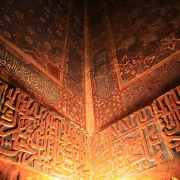Mullā Ṣadrā – Mukhtar H Ali: Introduction
Abstract:
Ṣadr ad-Dīn Muḥammad b. Ibrāhīm ash-Shīrāzī (1571–1640/980–1050), popularly known as Mullā Ṣadrā, is considered the culminating figure of Islamic philosophy in Persia. Born into an aristocratic family in Shīrāz, he was given the best education from an early age in the city of his birth. He then traveled to Isfahan to study under two of the greatest scholars of his time, Mīr Muḥammad Bāqir Dāmād Astarābādī (d. 1631/1041), with whom he studied philosophy and theology, and the enigmatic sage and jurist, Shaykh Bahāʾ ad-Dīn ʿĀmilī known as Shaykh Bahāʾī (d. 1620–21/1030) with whom he studied transmitted sciences and Qurʾānic exegesis. Having mastered both intellectual and transmitted sciences, he retreated to Kahak, a village outside of Qum, Iran, where he composed his magnum opus, al-Ḥikma al-mutaʿāliya fi l-asfār al-ʿaqliyya al-arbaʿa (Transcendent Philosophy on the Four Intellectual Journeys), popularly known as al- Asfār al-arbaʿa (The Four Journeys). He composed more than fifty works, but it was in the Asfār that he formulated a comprehensive philosophical system that integrated reason, revelation, and mystical experience. Mullā Ṣadrā’s school of “Transcendent Philosophy” (al-Ḥikma al-mutaʿāliya) synthesized several major streams of Islamic thought, including scholastic theology (kalām), Avicennan (d. 1037/428) Peripatetic philosophy (mashshāʾ), Suhrawardī’s (d. 1191/587) Illuminationist philosophy (ḥikmat al-ishrāq), and the Sufism of Ibn al-ʿArabī (d. 1240/638).









